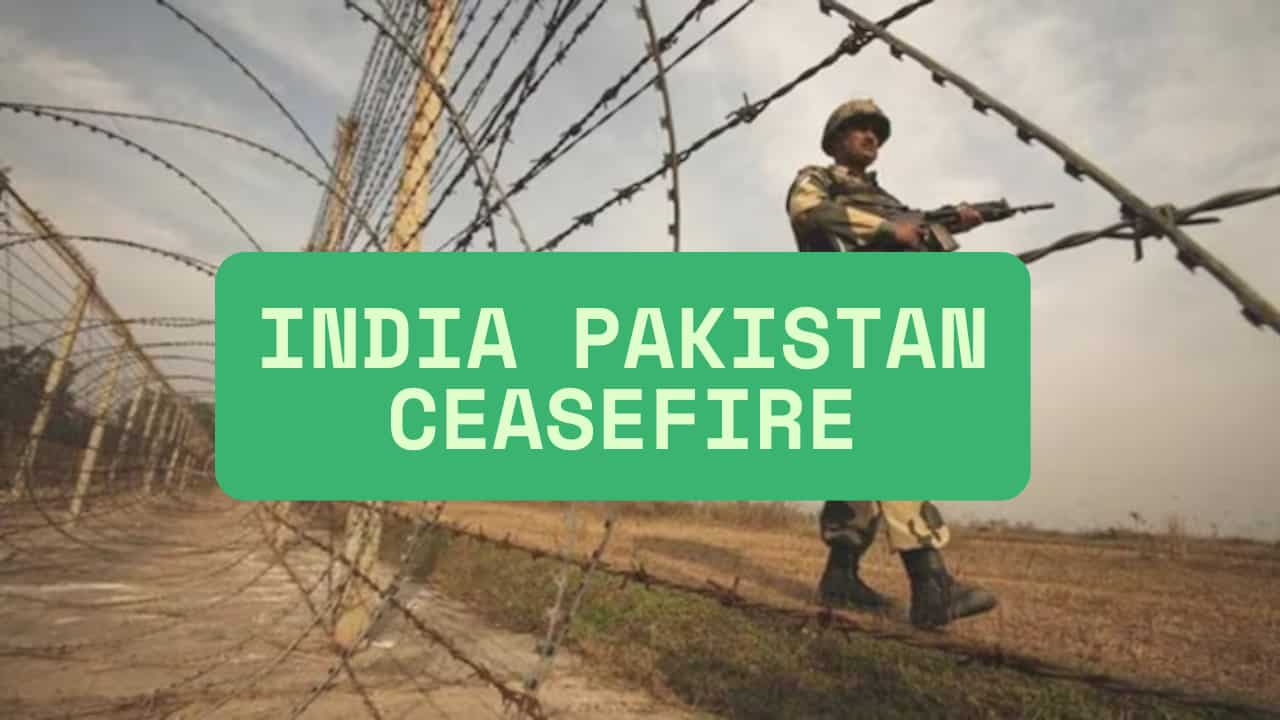India and Pakistan have agreed to a full ceasefire after a tense 90-hour standoff across land, air, and sea. The development was confirmed by India’s Ministry of External Affairs (MEA) in a statement delivered by Foreign Secretary Vikram Misri. As per the official update, the ceasefire came into effect at 5 PM IST on May 10, following a phone conversation initiated by Pakistan’s Director General of Military Operations (DGMO) with the Indian counterpart at 15:35 hours.
What triggered the ceasefire?
While details of the events leading to the 90-hour confrontation remain undisclosed, both countries have swiftly moved to de-escalate. Officials say instructions to halt operations have been dispatched on both sides. The next DGMO-level meeting is scheduled for May 12 at 12 noon, indicating that backchannel diplomacy is continuing.
Ceasefire 101: What it means
A ceasefire is a mutual or unilateral agreement to stop military action for a period—temporarily or permanently. It does not signify the end of a war or dispute, but rather a pause in combat, often to allow for negotiations or humanitarian relief.
In this case, the ceasefire includes complete cessation of military operations on land, at sea, and in the air—a rare all-domain truce in South Asia’s tense geopolitics.
Ceasefires in the Indo-Pak context
India and Pakistan have had multiple ceasefire agreements over the decades, notably the 2003 ceasefire along the Line of Control (LoC). However, violations have occurred periodically, escalating into skirmishes or full-blown stand-offs. The latest 90-hour conflict appears to be one of the shortest escalations, possibly diffused by rapid communication at the military leadership level.
Strategic implications
Experts suggest that while the ceasefire reflects tactical de-escalation, it should not be mistaken for a long-term peace deal. Ceasefires are often used as windows to regroup or reassess strategies. Misri acknowledged that the military-to-military channel remains active, which could either stabilise the situation or become a pivot for future negotiations.
What happens next?
All eyes will be on the May 12 DGMO-level talks. The outcome could determine whether this is the start of a longer thaw or a temporary tactical pause.
The term “ceasefire” originates from the Latin cessare (to stop) and ignis (fire). The first recorded modern ceasefire dates back to the Christmas Truce of 1914 during World War I, when German and Allied troops paused fighting to celebrate the holiday.
Anurag Dhole is a seasoned journalist and content writer with a passion for delivering timely, accurate, and engaging stories. With over 8 years of experience in digital media, she covers a wide range of topics—from breaking news and politics to business insights and cultural trends. Jane's writing style blends clarity with depth, aiming to inform and inspire readers in a fast-paced media landscape. When she’s not chasing stories, she’s likely reading investigative features or exploring local cafés for her next writing spot.






